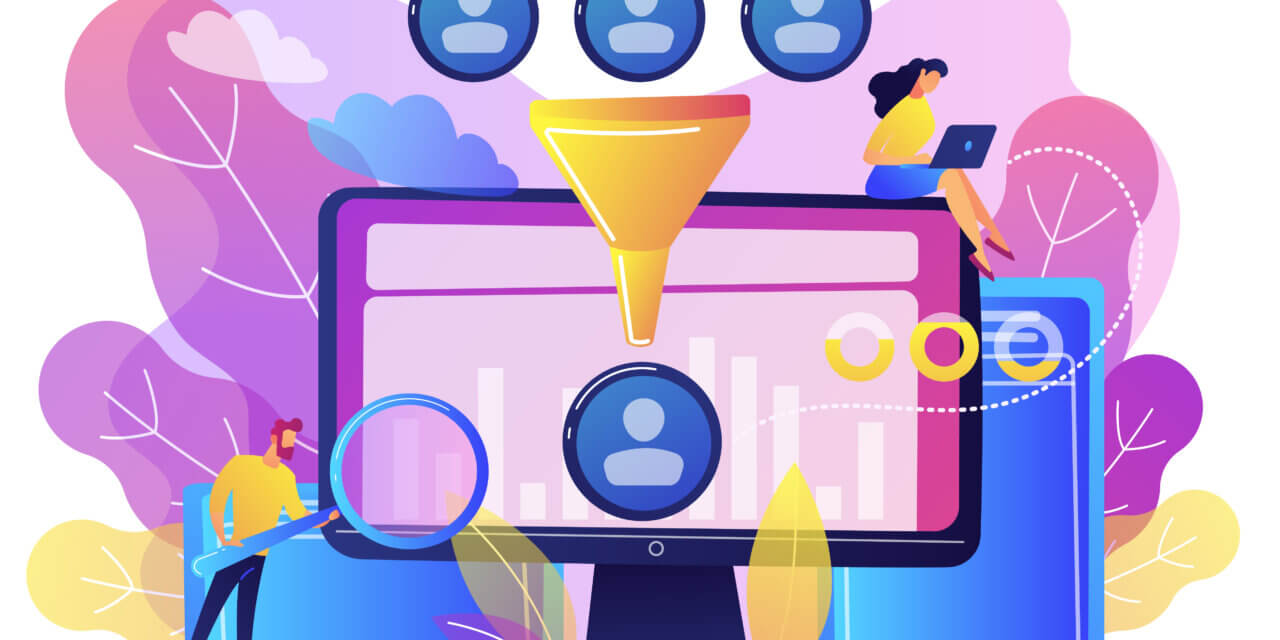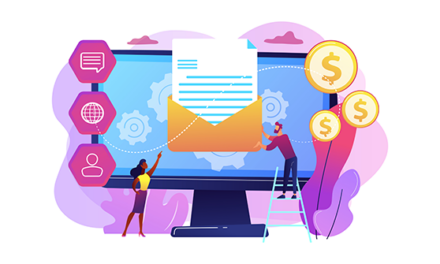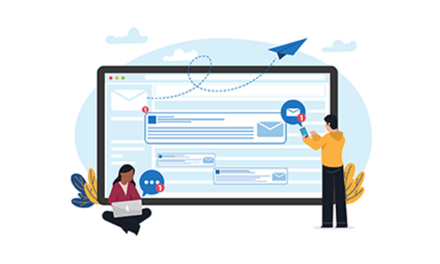Key Takeaways
- B2B SaaS lead generation combines inbound (SEO, content) and outbound (cold outreach, paid ads) strategies to attract and convert leads.
- Content, SEO, social media, and personalized emails help build trust and nurture leads.
- Lead magnets, free trials, and referral programs engage prospects and encourage conversions.
- Lead scoring and optimization ensure focus on high-quality, sales-ready leads.
- Overcome challenges like long sales cycles and competition with targeted content and data-driven strategies.
Are you struggling to get quality leads for your SaaS business? You’re not alone—61% of marketers say lead generation is their biggest challenge (HubSpot).
With the SaaS market set to hit $908 billion by 2030, competition is fierce. Simply attracting traffic isn’t enough. You need qualified SaaS lead prospects who are genuinely interested in your solution.
Successful B2B Saas lead generation means targeting the right audience, nurturing leads with value-driven content, and guiding them through the buyer’s journey from awareness to conversion.
It involves both inbound (SEO and content) and outbound (cold outreach and paid ads) marketing strategies.
So, how do you stand out and convert the right audience?
This guide will break down proven SaaS lead generation strategies, from SEO-driven inbound to outbound lead generation tactics for B2B SaaS, helping you attract, nurture, and close more deals.
What is SaaS lead generation?
SaaS lead generation is the process of attracting the right people interested in your software and turning them into paying customers.
For SaaS companies, success isn’t about making a sale and moving on—it’s about keeping customers coming back month after month.
That’s why lead generation isn’t just about numbers; it’s about attracting the right people who’ll actually stick around.
There are two main ways to generate leads for a SaaS business:
- Inbound lead generation – where potential customers find you through blog content, SEO, webinars, and organic search.
- Outbound lead generation – where you reach out directly through cold emails, LinkedIn outreach, and paid ads.
But here’s the challenge—getting people’s attention isn’t easy.
The SaaS market is crowded, and most potential buyers are already bombarded with options.
To stand out, you need a strategy that attracts, engages, and nurtures leads, guiding them through decision-making.
10 Key strategies for generating high-quality SaaS leads
Getting leads for your Saas business is not all about collecting emails.
It’s all about finding the right people who need your product, always keeping them interested, and helping them see why it’s worth paying for.
A scattered approach won’t work. You need a structured strategy that combines inbound and outbound tactics to generate consistent, high-quality SaaS sales leads.
Below are some of the most effective B2B SaaS lead generation strategies that help software companies grow.
1. Content marketing and SEO optimization
People don’t buy what they don’t understand. That’s why content marketing and SEO are at the heart of lead generation for software companies.
By creating valuable content, you position your software as the go-to solution while building trust with potential customers.
- Write blogs that answer real questions: SaaS buyers do their research before making decisions. Creating SEO-optimized content that answers industry-specific questions helps you rank on Google and attract organic traffic.
- Use lead magnets within content: Add free resources like templates, checklists, or gated eBooks to encourage visitors to share their email addresses.
- Optimize for the right keywords: Target high-intent search terms like “best CRM for small business” or “SaaS lead generation strategies” to capture prospects actively looking for solutions.
SEO and content marketing will bring organic SaaS B2B lead generation that compounds over time.
2. Leveraging social media platforms
Social media isn’t just for B2C brands—it’s a goldmine for SaaS lead generation when done strategically.
- LinkedIn is your best friend: Engage in industry conversations, share insights, and connect with decision-makers to build relationships.
- Twitter and Reddit drive discussions: Participate in relevant threads and groups where your audience is already asking questions.
- Use paid social ads for precise targeting: Platforms like Facebook and LinkedIn allow you to target SaaS decision-makers with laser precision.
Social media works best when it’s a two-way conversation, not just a promotional tool. Engage, add value, and build trust.
3. Email marketing campaigns
Email marketing still delivers results, but sending the same message to everyone won’t cut it.
Personalization is key—tailor emails based on interests, past interactions, and where the lead is in the buying journey.
- Segment your audience: Not every lead is at the same stage. Separate them based on interest level and send tailored emails accordingly.
- Use automation to nurture leads: Drip campaigns with educational content keep prospects engaged until they’re ready to buy.
- Write emails that sound human: Avoid overly promotional language—helpful, conversational emails work best.
When done right, email marketing builds relationships, keeps your brand top-of-mind, and turns warm leads into customers.
4. Hosting webinars and live events
SaaS buyers want proof before they commit, and webinars are one of the best ways to educate and convert them.
- Solve a pain point, don’t just sell: Webinars should focus on teaching rather than directly pitching your product.
- Collaborate with industry experts: A well-known guest speaker can attract a larger audience.
- Follow up immediately: Attendees are high-intent leads, so don’t let them slip away—send them valuable follow-ups right after the event.
Live events build credibility and position your software as the solution prospects are looking for.
5. Offering free trials and demos
One of the biggest advantages of SaaS is that customers can try before they buy. A free trial or live demo lets potential buyers experience your product’s value firsthand.
- Make it easy to sign up: Reduce friction—no credit card required is a great start.
- Personalize demos: Generic presentations don’t cut it—tailor demos based on the lead’s business needs.
- Use in-app onboarding: Guide users through key features so they don’t feel lost.
A well-structured trial or demo strategy can turn leads into paying customers faster.
6. Paid advertising strategies
For quick and targeted SaaS lead gen, paid ads can immediately put your brand in front of high-intent prospects.
- Google Ads capture active buyers: Target search terms like “best lead generation SaaS” to attract people looking for solutions.
- LinkedIn Ads work well for B2B SaaS lead generation: Use job titles and industry filters to reach decision-makers directly.
- Retarget website visitors: Most people don’t convert on their first visit—retarget them with tailored ads to bring them back.
With the right budget and targeting, paid ads can deliver high-quality leads quickly.
7. Building strategic partnerships
Partnerships can fast-track your SaaS lead generation by tapping into an existing audience.
- Co-marketing with complementary SaaS products: If you sell a CRM, partner with an email marketing tool to cross-promote.
- Affiliate programs expand reach: Reward industry influencers or existing customers for referring new users.
- Reseller partnerships create a new sales channel: Some partners may even sell your software on your behalf.
You gain credibility and access to new potential customers by working with trusted partners.
8. Utilizing lead magnets
People don’t just give away their contact details—you must offer something in return. That’s where lead magnets come in.
- Ebooks and whitepapers – In-depth resources that educate and add value.
- Exclusive templates and tools – Ready-to-use materials that help solve a problem.
- Free courses and workshops – Bite-sized lessons that position your SaaS as the solution.
A good lead magnet attracts high-quality leads who are genuinely interested in your product.
9. Implementing referral programs
Happy customers are your best advocates. A strong referral program—whether through discounts, credits, or exclusive perks—encourages them to spread the word.
- Offer incentives that matter: Discounts, credits, or exclusive features can encourage referrals.
- Make it easy to refer: A frictionless one-click referral system works best.
- Promote it regularly: Don’t assume customers will refer—remind them.
When done right, referral programs drive high-quality leads with minimal cost.
10. Participating in online communities
People trust advice from peers more than ads. Being active in online communities helps position your SaaS as a go-to solution.
- Answer questions on forums like Quora and Reddit: Provide value, not just promotions.
- Engage in LinkedIn and Facebook groups: Build relationships by sharing insights.
- Host AMAs (Ask Me Anything) sessions: Establish authority while addressing direct concerns.
A strong presence in online communities builds credibility and brings in organic leads over time.
Best practices for optimizing lead generation efforts
Generating leads isn’t just about quantity—it’s about quality. If you’re attracting the wrong audience, no amount of marketing or sales effort will turn them into customers.
That’s why successful SaaS lead generation isn’t just about bringing in traffic—it’s about refining and optimizing the entire process to ensure you’re targeting, nurturing, and converting the right leads.
Here’s how to do it effectively.
1. Defining and understanding your ideal customer profile
Not everyone who visits your website or downloads your lead magnet is a good fit for your software.
To improve the quality of your SaaS leads, you need a clear picture of your ideal customers and what they need.
Start by answering these key questions:
- Who benefits most from your software? Is it small businesses, enterprises, or a specific industry?
- What pain points does your software solve? Understanding the problems your customers face will help you create messaging that resonates.
- Where do your best customers come from? Are they discovering you through organic search, social media, or referrals?
Once you have these insights, create a detailed Ideal Customer Profile (ICP) that includes:
- Industry and company size
- Job roles of key decision-makers
- Common pain points and goals
- Buying behavior and preferred communication channels
By refining your B2B SaaS lead generation strategies around a well-defined ICP, you ensure you’re spending resources on leads with real potential to convert.
2. Implementing lead scoring to prioritize prospects
Not all leads are at the same stage in their buying journey. Some are just browsing, while others are actively looking for a solution.
Instead of treating all leads equally, lead scoring helps you prioritize those most likely to convert.
Here’s how it works:
- Assign points based on engagement: Someone downloading an eBook may get 10 points, while someone requesting a demo receives 50 points.
- Use behavioral data: If a lead visits your pricing page multiple times, they’re more likely to be sales-ready than someone who only reads a blog post.
- Factor in demographic data: If your target customers are mid-sized B2B SaaS companies, a lead from a small B2C startup might not be as valuable.
Once you’ve implemented lead scoring, your marketing and sales teams can focus on the hottest SaaS leads, ensuring time and resources go toward prospects who are actually ready to convert.
3. Continuously analyzing and refining your strategies
Lead generation isn’t a “set it and forget it” process. What works today might not work six months from now.
That’s why analyzing performance and making data-driven improvements is crucial for long-term success.
To optimize your lead generation for SaaS companies, track these key metrics:
- Conversion rates – How many leads turn into paying customers?
- Lead source performance – Are most conversions coming from SEO, paid ads, or referrals?
- Engagement levels – Are leads opening emails, attending webinars, or interacting with your content?
If something isn’t working, adjust your approach:
- If organic traffic is low, revisit your SEO strategy and create more high-intent content.
- If email campaigns aren’t converting, test different subject lines or email sequences.
- If paid ads aren’t delivering high-quality leads, refine targeting and messaging.
The best B2B SaaS lead generation strategies aren’t static—they evolve based on performance insights and market shifts.
Common Challenges in SaaS Lead Generation (and How to Overcome Them)
Generating high-quality leads for your SaaS business isn’t a walk in the park.
The long sales cycles, intense competition, and ever-tightening data regulations make it tough to turn interest into actual revenue.
You must tackle these challenges head-on to keep a steady stream of potential customers coming in.
1. Dealing with long sales cycles in B2B SaaS
SaaS isn’t an impulse buy. Businesses don’t just click “Subscribe” after one visit—they research, compare, and seek approvals before committing. For enterprise-level SaaS, this back-and-forth can stretch the sales process across months.
How to overcome this:
- Educate early – Don’t wait for leads to ask questions. Give them detailed guides, product comparisons, and case studies upfront so they can make informed decisions faster.
- Keep them engaged – A lead might download a whitepaper today but not be ready to buy for months. Stay in touch with personalized emails, retargeting ads, and webinars to keep your software on their radar.
- Make your free trial irresistible – Let prospects experience the product without friction. Ditch unnecessary sign-up steps and guide them toward key features that showcase real value.
- Prioritize sales-ready leads – Not all leads are equal. Use lead scoring to identify prospects who show buying intent—like those revisiting your pricing page multiple times—and focus your efforts on them.
2. Standing out in a crowded SaaS market
With thousands of SaaS products vying for attention, potential customers are bombarded with options.
You’ll get ignored if your messaging sounds like every other software company out there.
How to overcome this:
- Narrow your focus – Instead of targeting everyone, carve out a niche. Are you the best CRM for real estate agents? What is the most intuitive accounting tool for freelancers? Specialization helps you stand out.
- Show what makes you different – Saying you have “AI-powered automation” isn’t enough—and so does everyone else. Instead, highlight how your automation actually makes life easier.
- Let your customers sell for you – Case studies, video testimonials, and real success stories build credibility and prove your software delivers results.
- Explore less crowded spaces – If traditional ads are too competitive, shift to places where your audience actively engages—like LinkedIn groups, Reddit discussions, and industry podcasts.
3. Navigating data privacy and compliance
With regulations like GDPR and CCPA, data collection isn’t as simple as it used to be. Consumers are more cautious about sharing their information, and failing to comply with privacy laws can lead to major fines (and lost trust).
How to Stay Compliant (and Win Trust):
- Tell people what data you’re collecting – Be honest about what information you gather and how you use it. When leads know their data is safe, they’ll feel more comfortable sharing it.
- Use opt-in forms correctly – Always ask for permission before collecting details. Your forms should clearly state what users are signing up for and give them control over their preferences.
- Keep customer data secure – Protect sensitive information with encryption, limit who can access it, and run regular security checks to prevent leaks.
- Make opting out simple – If someone wants to unsubscribe or remove their data, don’t make it a headache. A hassle-free process keeps your brand trustworthy and customer-friendly.
Conclusion
Bringing in SaaS leads isn’t just about getting more website traffic or filling up an email list—it’s about attracting the right people, keeping them engaged, and helping them see how your product solves their problems.
If you focus on building trust, delivering value, and making the experience seamless, you won’t just generate leads—you’ll create long-term customers who believe in your product.
The most successful SaaS companies don’t just chase leads. They nurture them, personalize outreach, and focus on long-term relationships.
Whether through SEO, paid ads, partnerships, or customer referrals, every effort should aim at one thing—building trust.
Lead generation isn’t a one-time task. It evolves with buyer behavior and industry trends. The SaaS businesses that stay ahead are the ones that adapt, experiment, and listen to their audience because those are the companies that turn leads into long-term customers.
Frequently asked questions
1. What is an outbound lead generation service for B2B SaaS?
Outbound lead generation helps SaaS companies proactively reach potential customers instead of waiting for them to find you. This includes cold emails, LinkedIn outreach, phone calls, and paid advertising to reach decision-makers faster.
2. How is lead generation for B2B SaaS different from other industries?
SaaS lead generation focuses on attracting businesses that need long-term software solutions rather than one-time purchases.
The sales cycle is longer, requiring education, nurturing strategies, and product demos to move leads from interest to purchase.
Unlike traditional B2B sales, SaaS often relies on free trials, webinars, and automation to guide prospects through the buying journey.
3. How can B2B SaaS companies improve their lead generation?
The best way to improve SaaS lead generation is by:
- Understanding your Ideal Customer Profile (ICP) and tailoring marketing to their pain points.
- Using lead scoring to prioritize the hottest prospects.
- Automating outreach while still keeping messaging personal and relevant.
- Leveraging multi-channel strategies—combining SEO, social media, email, and outbound efforts for maximum reach.




